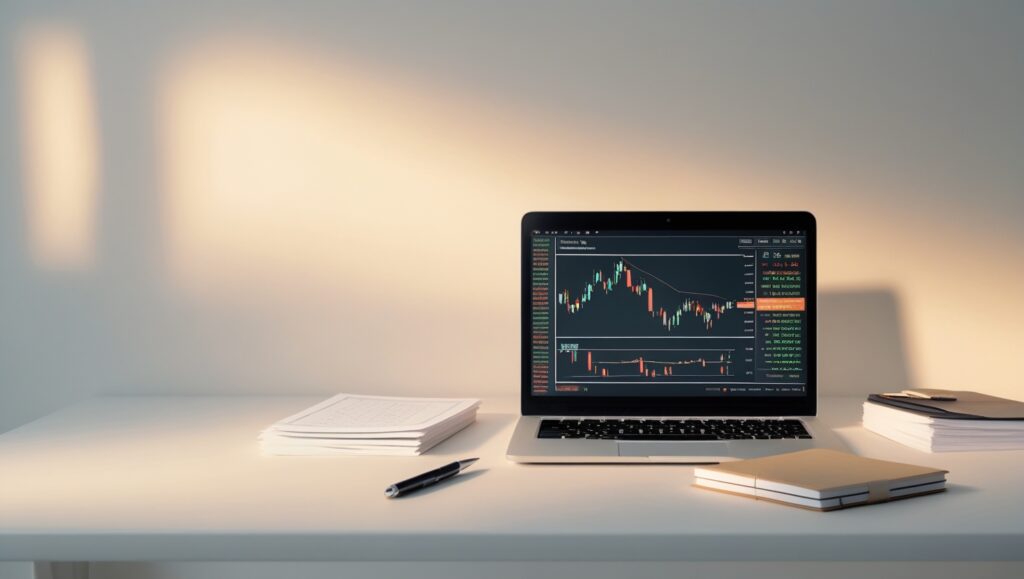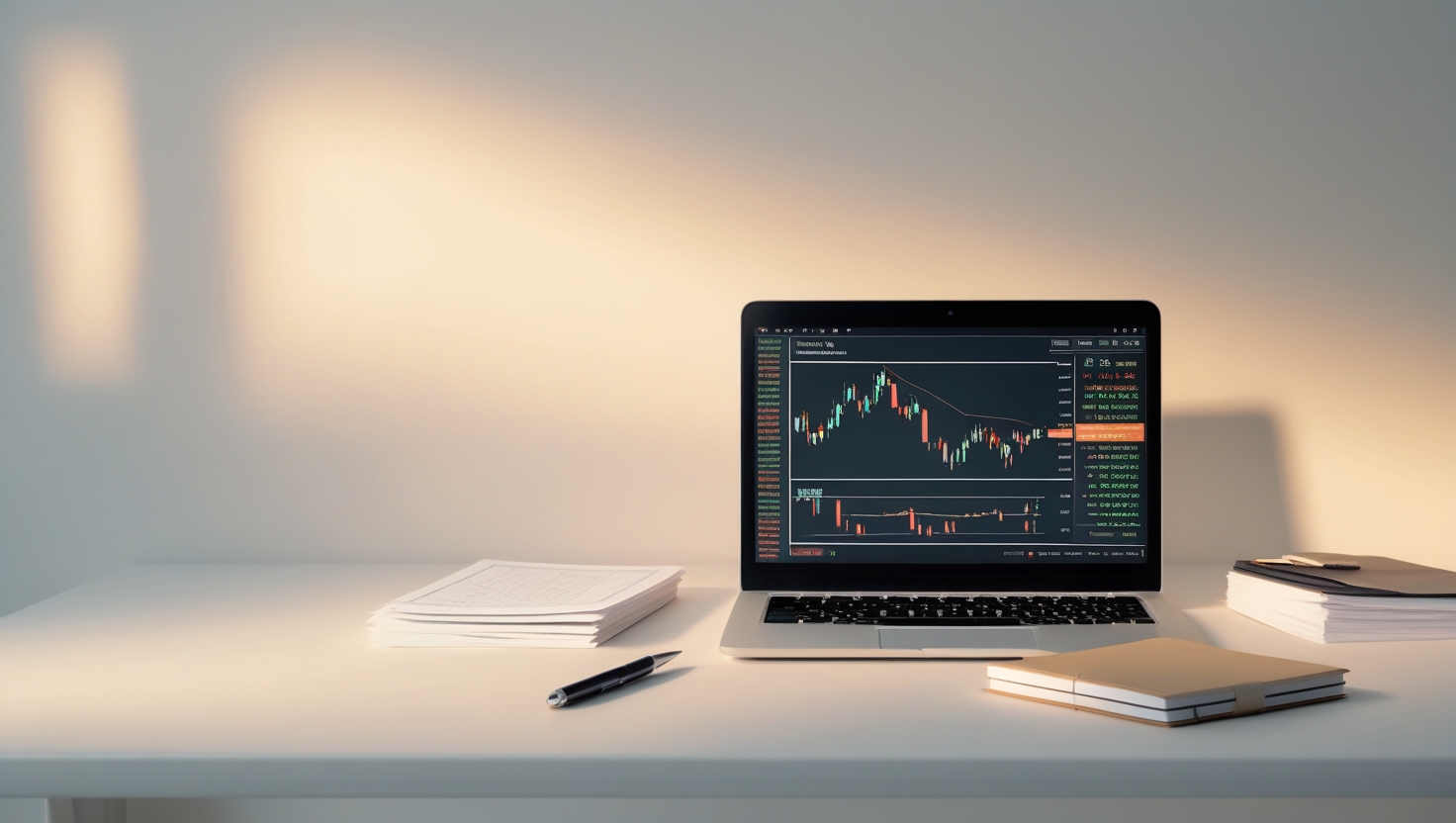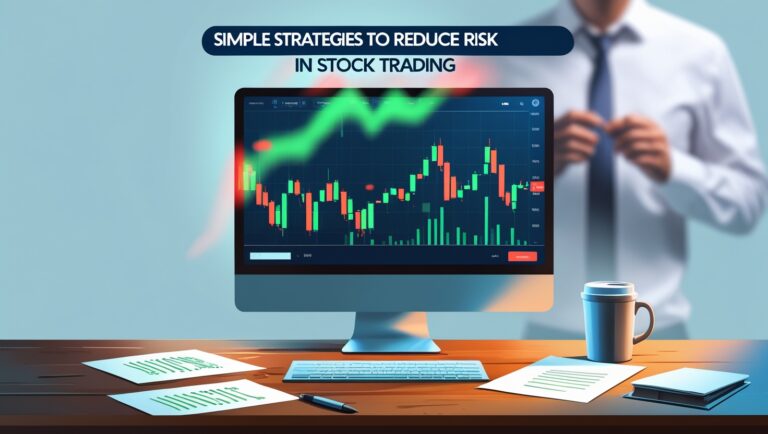The Easiest Way to Find Stocks That Move Fast (No Indicators Needed)
The Easiest Way to Find Stocks That Move Fast (No Indicators Needed)
If you’ve ever sat in front of your screen wondering which stocks are going to run today — you’re not alone. I used to spend hours trying to decode the perfect setup with indicators, hoping something would take off. But the truth is, you don’t need fancy tools to find momentum. What you need is a simple system that helps you spot stocks that move fast — without using a single indicator.
In this post, I’ll walk you through how I find fast-moving stocks using just price action, volume, and a solid pre-market routine. And if you want the complete strategy I use to trade and pay my bills with stocks, I’ve laid it all out inside my ebook right here.

Table of Contents
Why Fast Movers Are Worth Targeting
For small account traders like me, fast-moving stocks offer real opportunity. You don’t need to hold overnight. You don’t need to wait weeks. When a stock moves fast, you can get in, take your profits, and be done before lunch.
But the key is finding stocks with speed and direction — not random spikes that fade out. That’s where volume, price behavior, and pre-market scanning come into play.
I Start with Pre-Market Volume
Every morning before the open, I scan for high volume movers. I filter by:
- Price under $30
- Volume over 100k
- Gaps over 5%
- Fresh news or catalyst
This immediately shows me which tickers already have attention — the kind of attention that leads to fast movement after 9:30AM. If a stock is already moving heavy in pre-market, there’s a good chance it will continue once volume floods in.
I Look for Price Action — Not Signals
I don’t use MACD. I don’t wait for RSI to cross anything. I simply watch how the stock reacts to key levels — especially pre-market highs and prior support.
If a stock consolidates just below resistance and then breaks out with volume, that’s my signal. No indicators. Just clean price action. And I explain exactly how to spot these setups inside my ebook, including how I use these moves to grow my account weekly.
Float and Volume Matter More Than Indicators
One of the secrets to spotting fast-moving stocks is paying attention to the float. Lower float stocks tend to move faster because they have fewer shares to trade. Add in high volume and a news catalyst — and that’s the recipe for a strong intraday run.
I usually avoid stocks with floats above 200M unless they have major catalysts. My sweet spot is low-to-mid float movers with real momentum building before the open.
How I Confirm Momentum Without Indicators
Once the market opens, I wait for confirmation. I want to see:
- Volume surges
- Clean breakouts over pre-market levels
- Strong hold of support after the push
If a stock breaks a level and holds, I’m interested. If it fakes out and fails, I skip it. My trades aren’t based on signals — they’re based on behavior I’ve seen work repeatedly. That’s why I always remind traders: you don’t need indicators — you need discipline and structure.
I Only Trade a Few Stocks a Day
I never try to catch every fast mover. That’s how you burn out and make mistakes. Instead, I pick no more than 6 stocks every morning. These are my focus. If something else runs that wasn’t on my list — I don’t chase it.
This small change helped me become more focused, more consistent, and more profitable. And it’s one of the key rules I teach inside my ebook.
No Need for Expensive Tools
Everything I do — from scanning to planning trades — is done with free or affordable tools. You don’t need to spend thousands on software. What you need is a clear routine that works. In my ebook, I break down the exact platforms I use daily — and how I use them to find stocks that explode with volume.
Fast Movers Require Fast Decisions — But Not Impulsive Ones
I don’t rush in the second the bell rings. I watch the first few candles. I look for confirmation and control — is the move real, or is it a fakeout?
Most fast movers give a second chance — a pullback entry or a retest. I wait for those moments. My style is fast-paced, but it’s not reckless. It’s based on timing and pattern recognition, not emotions.
Real Results, No Guesswork
The best part of this system is that it’s real. It’s what I do every day. I’ve used this approach to find stocks that move quickly and take advantage of the cleanest part of the move — without holding overnight, without overtrading, and without needing a ton of capital.
And yes — this is how I pay my bills with stocks. That’s why I created Pay Bills With Stocks, to show you how I built the routine from scratch.
Final Thoughts
You don’t need to follow 20 indicators or buy into overhyped alerts. The easiest way to find stocks that move fast is to focus on volume, price action, and pre-market momentum. Once you build the habit of spotting these things early, the setups become obvious — and your confidence goes up.
If you’re ready to cut the noise and start building a strategy that works, grab my ebook and start learning how to trade fast movers with clarity and confidence.
One thing I’ve learned is that stocks that move fast all follow similar behavior patterns. You’ll notice the same characteristics — high volume early, a clean breakout over pre-market highs, and buyers stepping in at key support. When you train your eyes to look for those patterns, you stop relying on signals and start trusting the chart itself.
Many traders get caught up trying to find the “perfect stock,” but I’m more interested in finding stocks with the right conditions. I don’t care if it’s a big name or a penny stock — if the setup looks clean, the volume is real, and the price action makes sense, I’m watching it. I explain my filtering process in my ebook, so others can use the same method to stay focused.
Another key for fast movers is knowing when to stay away. Not every stock that gaps up will continue. Some will fade immediately at the open. That’s why I wait for a clear break and hold of pre-market levels. If it can’t hold support with strong volume, I skip it — no questions asked.
I also don’t enter trades blindly at 9:30AM. That’s when the most noise happens. Spreads are wide, price is jumpy, and emotions run high. I wait. I watch the first few candles form. That gives me more information than any indicator could. I want to see if buyers really mean business — and if they do, I’m ready.
Watching how a stock reacts to key levels tells me more than any oscillator. If buyers defend a level twice, that’s a sign. If a breakout fails and gets rejected hard, that’s another sign. These micro-patterns are the edge — and they’re something you can learn with repetition and journaling.
With fast movers, I always have a plan before the trade starts. I know my entry, my stop, and my target. That structure keeps me grounded even when price starts flying. I’m not guessing or hoping — I’m reacting with a clear framework. I built that framework through experience, and it’s exactly what I share in Pay Bills With Stocks.
Another powerful filter I use is unusual volume vs. average volume. If a stock usually trades 500k shares a day and it’s already at 3 million before 9AM — that tells me something big is happening. I prioritize those stocks because they have real interest behind them, not just a temporary spike.
I’ve also learned to keep my charts clean and minimal. No distractions, no clutter. Just candles, volume bars, and key price levels. That simplicity allows me to read the market faster and make clearer decisions — which matters a lot when you’re trading fast movers.
A mistake I used to make was jumping in too late. I’d wait too long to get confirmation, and by the time I entered, the move was halfway over. Now, I trust my preparation. If I’ve done the research, planned the levels, and the volume confirms — I pull the trigger with confidence.
The best trades often come within the first 30–60 minutes of the open. That’s when volatility and opportunity are at their highest. But I don’t need to trade every day. If I catch one good move and hit my goal, I’m done. That level of focus took time to build, and it’s why I only trade the setups that meet my personal criteria.
Sometimes I’ll watch a stock all morning and never trade it — and that’s okay. Having the discipline to wait is just as important as knowing what to look for. The market always offers new opportunities. My job is to be ready, not desperate.
If you’re tired of chasing stocks that don’t move or relying on indicators that lag, try this approach. Learn to read the chart, respect the volume, and trade what you see. That’s what I do every day, and it’s how I built a trading system that actually works. If you want to follow my process step-by-step, grab my ebook and start seeing fast movers in a whole new way.

Stay ahead in the stock market! Subscribe to our newsletter and receive exclusive stock flow reports, trading insights, and actionable tips directly in your inbox. Join thousands of traders who get our updates first.








6 Comments